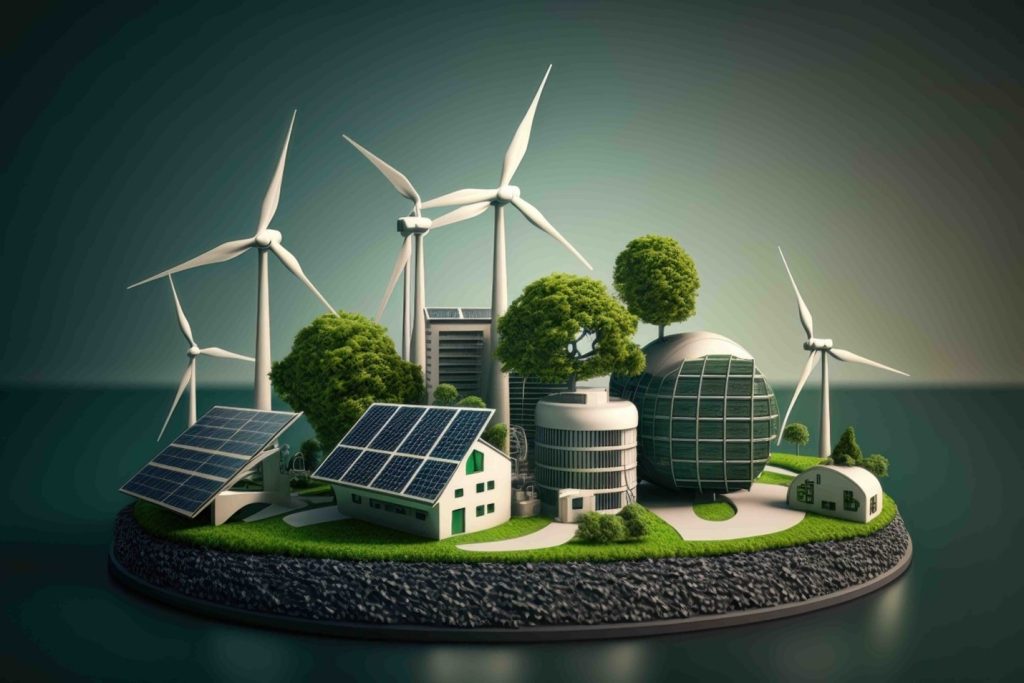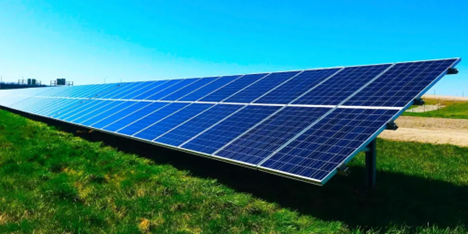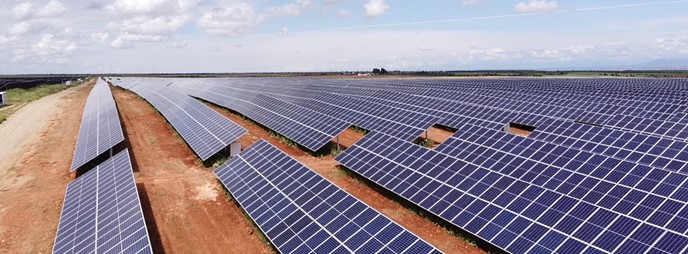Renewable Energy
The Daya Energy Company, with up-to-date engineering knowledge in the design, contracting, and implementation of various renewable power plants, is recognized as one of the young and active companies in this industry. We are committed to providing comprehensive and specialized services in all areas related to renewable energy.
Renewable energies refer to energy sources that are naturally and continuously available and can be used sustainably. These sources include solar, wind, hydro, geothermal, and biomass energy.

Here, we will examine two types of renewable power plants: wind and solar power plants.
Wind Power Plants
Wind power plants use wind turbines to convert the kinetic energy of the wind into electrical energy. These turbines are typically installed in locations with suitable wind conditions. The advantages of wind power plants include:
1. Sustainability and Renewability: Wind is a renewable energy source that is continuously available.
2. Pollution Reduction: Generating electricity from wind energy helps reduce greenhouse gas emissions.
3. Low Operating Costs: After installation, the maintenance and operational costs of wind power plants are generally low.

However, there are also challenges, including dependence on weather conditions and the need for large spaces for turbine installation.
Solar Power Plants
Solar power plants use solar panels to convert sunlight into electrical energy. These panels can be installed independently or on a large scale in solar power plants. The advantages of solar power plants include:
1. Accessibility: Sunlight is widely available and can be utilized in various regions of the world.
2. Cost Reduction: With advancements in technology, the cost of producing solar panels has significantly decreased.
3. Reduced Dependence on Fossil Fuels: Utilizing solar energy helps reduce reliance on non-renewable energy sources.
Challenges for solar power plants include the need for large spaces for panel installation and dependence on weather conditions (such as day and night and climate).

Types of Solar Power Plants
As one of the renewable energy sources, solar power plants are divided into two main categories: Photovoltaic (PV) solar power plants and Concentrated Solar Power (CSP) plants.
- 1. Photovoltaic (PV) Solar Power Plants: These plants use solar panels to convert sunlight into electricity. PV panels are typically made from silicon cells and can be installed independently or on a large scale in solar farms. These systems are easy to install and can be used in various locations, including rooftops and vacant lands.

- 2. Concentrated Solar Power (CSP) Plants: These plants use mirrors or lenses to concentrate sunlight onto a specific point. The thermal energy produced is then used to generate steam and drive turbines. CSP plants are usually built in areas with high solar radiation and can store energy for longer periods.
Both types of solar power plants contribute to reducing dependence on fossil fuels and decreasing greenhouse gas emissions, presenting a sustainable solution for future energy supply.
Solar Panels
The technology for manufacturing solar panels has seen significant advancements in recent years. Here are some of the latest technologies and types of solar panels:
- 1. Monocrystalline Solar Panels: These panels are made from pure silicon and are popular due to their high efficiency and smaller space requirements. They typically perform well even in low light conditions.
- 2. Polycrystalline Solar Panels: These panels are made from multicrystalline silicon and usually have a lower cost. However, their efficiency is slightly lower compared to monocrystalline panels.
- 3. Thin-Film Solar Panels: These panels are made from thin layers of semiconductor materials and are used in specific applications due to their lightweight and flexibility, such as installation on curved or movable surfaces.
- 4. Building-Integrated Photovoltaics (BIPV): These panels are directly integrated into building structures and can serve as building materials. They enhance both the aesthetics and efficiency of buildings.
- 5. Bifacial Solar Panels: These panels can capture sunlight from both sides, resulting in higher efficiency. They typically perform better in environments where light is reflected from the ground.
New technologies, such as the use of new materials like perovskites and improvements in manufacturing processes, have contributed to increased efficiency and reduced costs. These advancements support sustainable development and greater utilization of renewable energies.
Some of the world’s most recognized brands in solar panel production include:
- 1. SunPower – known for high efficiency and product quality.
- 2. Trina Solar – one of the largest solar panel manufacturers globally.
- 3. JinkoSolar – known for producing cost-effective panels with good quality.
- 4. Suntech – one of the older brands in the solar energy industry.
- 5. Renogy – recognized for portable solar panels and home solar energy systems.
These brands are known in the global market for their quality, innovation, and reliability.

In recent years, Iran has paid more attention to the use of renewable power plants. Given the rich resources of solar and wind energy, the country has high potential for developing these types of power plants. As one of the countries with high solar radiation, Iran can utilize solar energy as a primary energy source.
Additionally, various regions of the country, especially along the coasts and mountainous areas, provide suitable conditions for wind energy production. However, there are also challenges in this area, including the need for significant investments, appropriate infrastructure, and supportive government policies. Overall, if these challenges are addressed, Iran could become one of the pioneers in renewable energy in the region.

